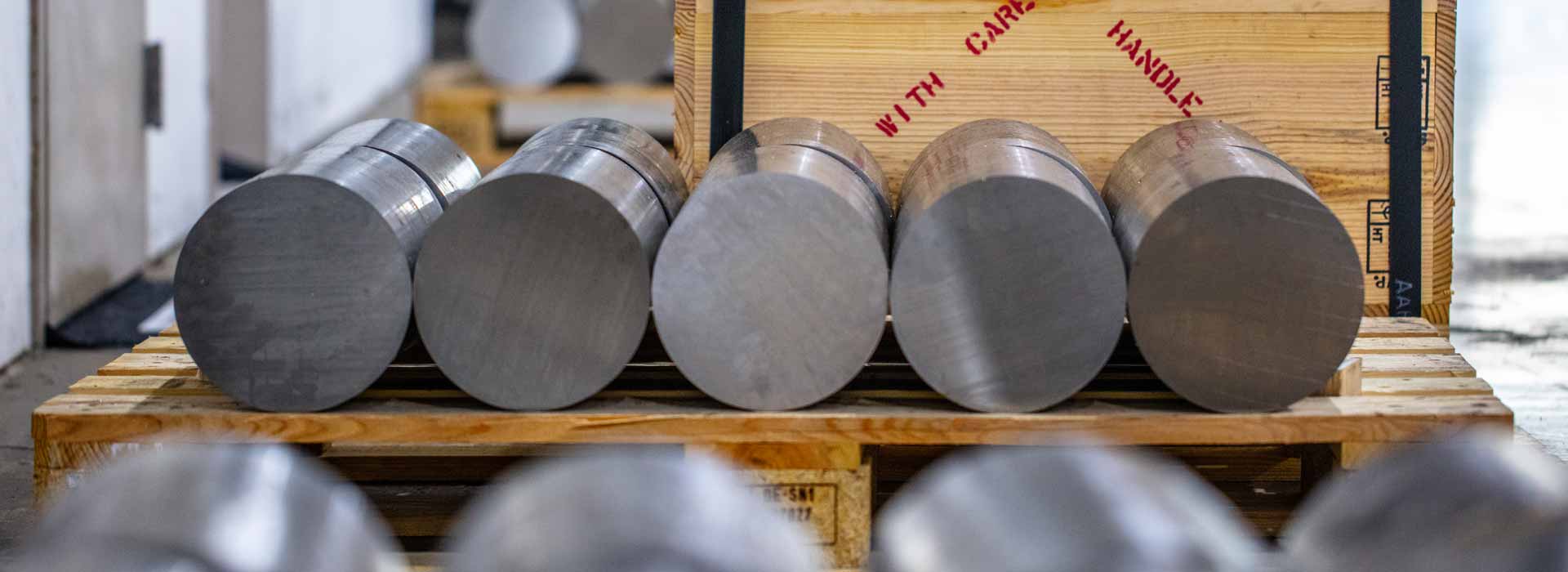Wavy projections formed at the open end of a cup or shell in the course of deep drawing because of differences in directional properties. Also termed scallop. See non scalloping.
A method whereby the raw or slit edges of strip metal are passed or drawn one or more times against a series of files, mounted at various angles. This method may be used for deburring only or filing to a specific contour including a completely rounded edge.
Creases extending in from the edge of the temper rolled sheet.
COPPER BASE ALLOYS - Slit, Slit and Edge Rolled, Sheared, Sawed, Machined. SHEET STEELS OR ALUMINUM SHEET - Mill Edge, Slit Edge or Sheared Edge. STRIP STEELS and STAINLESS STRIP No.1 Edge - A smooth, uniform, round or square edge, either slit or filed or slit and edge rolled as specified, width tolerance +/-,QQ5”. No.2 Edge - A natural round mill edge carried through from the hot rolled band. Has not been slit, filed, or edge rolled. Tolerances not closer than hot-rolled strip limits. No.3 Edge - Square, produced by slitting only. Not filed. Width tolerance close. No.4 Edge - A round edge produced by edge rolling either from a
Maximum stress that a material will stand before permanent deformation occurs.
Steel made in any furnace where heat is generated electrically, almost always by arc. Because of relatively high cost, only tool steels and other high-value steels are made by the electric furnace process.
Galvanizing (see) by electro deposition of zinc on steel.
(Electrolytic Brightening) - An anodic treatment. A cleaning, polishing, or oxidizing treatment in which the specimen or work is made the anode in a suitable electrolyte; an inert metal is used as cathode and a potential is applied.
Black Plate (See definition) that has been Tin plated on both sides with commercially pure tin by electro deposition (refer Tin Plating.)
1. Decoration and protection against corrosion copper, nickel and chromium 2. Protection against corrosion cadmium or zinc 3. Protection against wear chromium 4. Build-up of a part or parts undersize chromium or nickel 5. Plate for rubber adhesion brass 6. Protection against carburization and for brazing operations copper and nickel
Increase in length which occurs before a metal is fractured, when subjected to stress. This is usually expressed as a percentage of the original length and is a measure of the ductility of the metal.
Raising or indenting a design in relief on a sheet or strip of metal by passing between rolls of desired pattern. (See Patterned or Embossed in this Dictionary.)
Maximum alternating stress which a given material will withstand for an indefinite number of times without causing fatigue failure.
In metallography, the process of revealing structural details by the preferential attack of reagents on a metal surface.
Steel representing the eutectoid composition of the iron-carbon system, with about 0.80% to 0.83% carbon, the eutectoid temperature being about 1333?F. Such steel in the annealed condition consists exclusively of pearlite Steels with less than this quota of carbon are known as hypo-eutectoid and contain free ferrite in addition to the pearlite. When more carbon is present, the steel is known as hyper-eutectoid and contains free cementite. The presence of certain elements, such as nickel or chromium, lowers the eutectoid carbon content.
Hardened and tempered, blue polished. Carbon content about 1.00, Chromium .17. Used for the expanders in oil piston rings. Hardness 30 N 70 to 73. Range of sizes run for grooves "3/32 to ?" wide with the steel approximately .003 less than the grooves and thickness from .012 to .020.
An apparatus for indicating the deformation of metal while it is subjected to stress.
The measurement of deformation during stressing in the elastic range, permitting determination of elastic properties such as proportional limit, proof stress, yield strength by the offset method and so forth. Requires the use of special testing equipment and testing procedures such as the use of an extensometer or the plotting of a stress-strain diagram.
In brass mill terminology, Extra Hard is six B & S numbers hard or 50.15% reduction from the previous annealing or soft stage.
In brass mill terminology, Extra Spring is ten numbers hard or 68.55% reduction in thickness from the previous annealing or soft stage.
Shaping metal into a chosen continuous form by forcing it through a die of appropriate shape.
